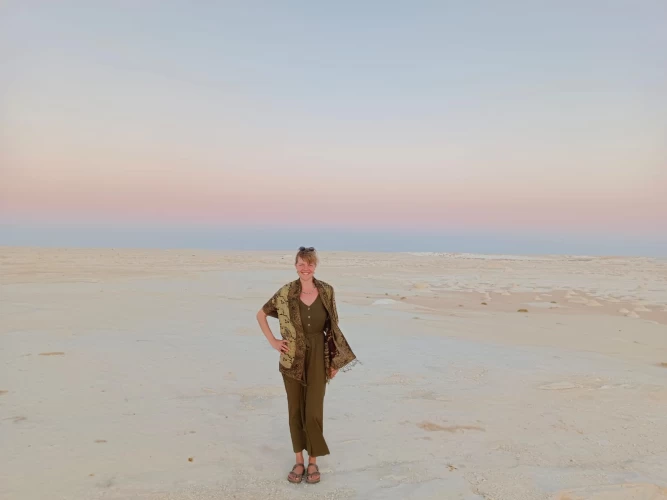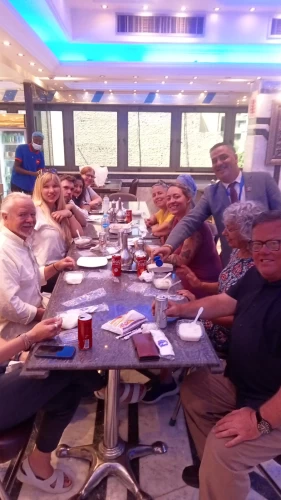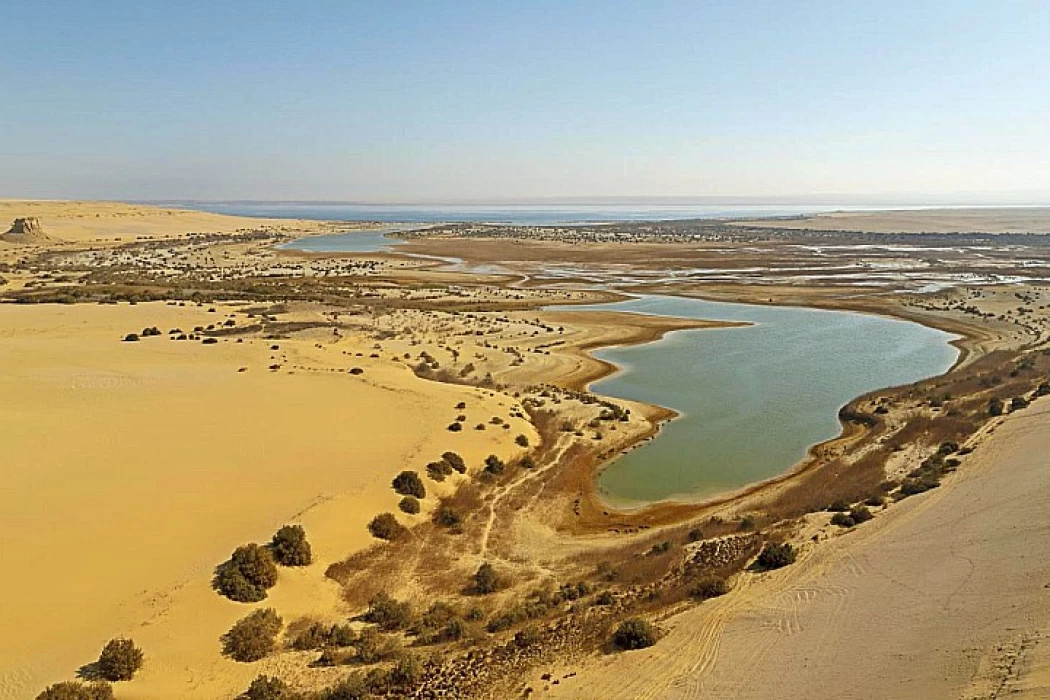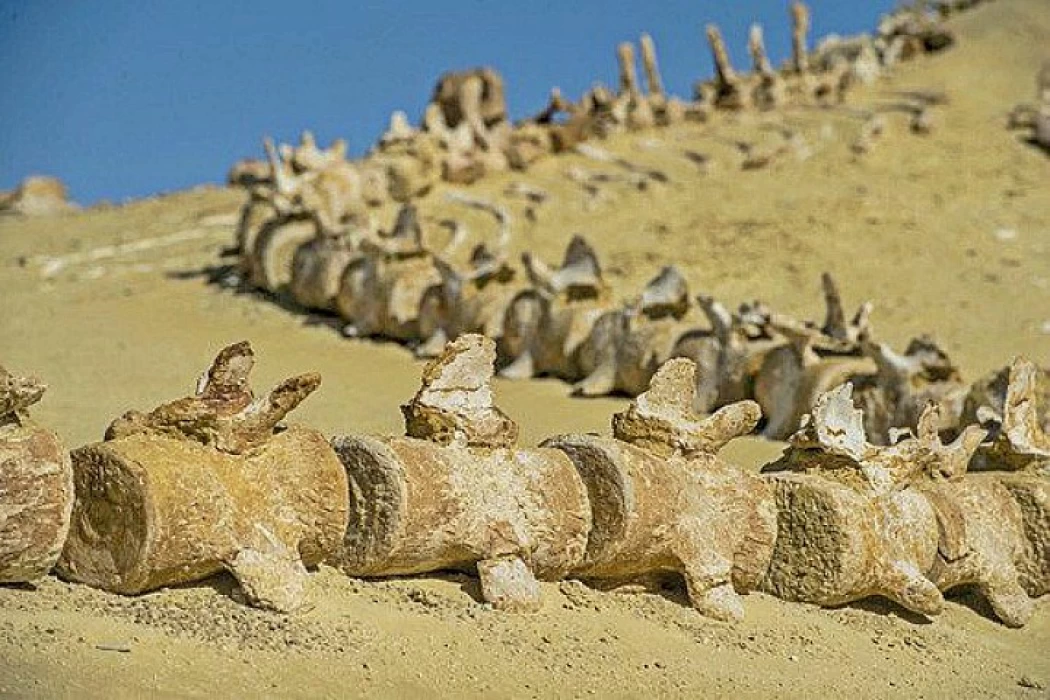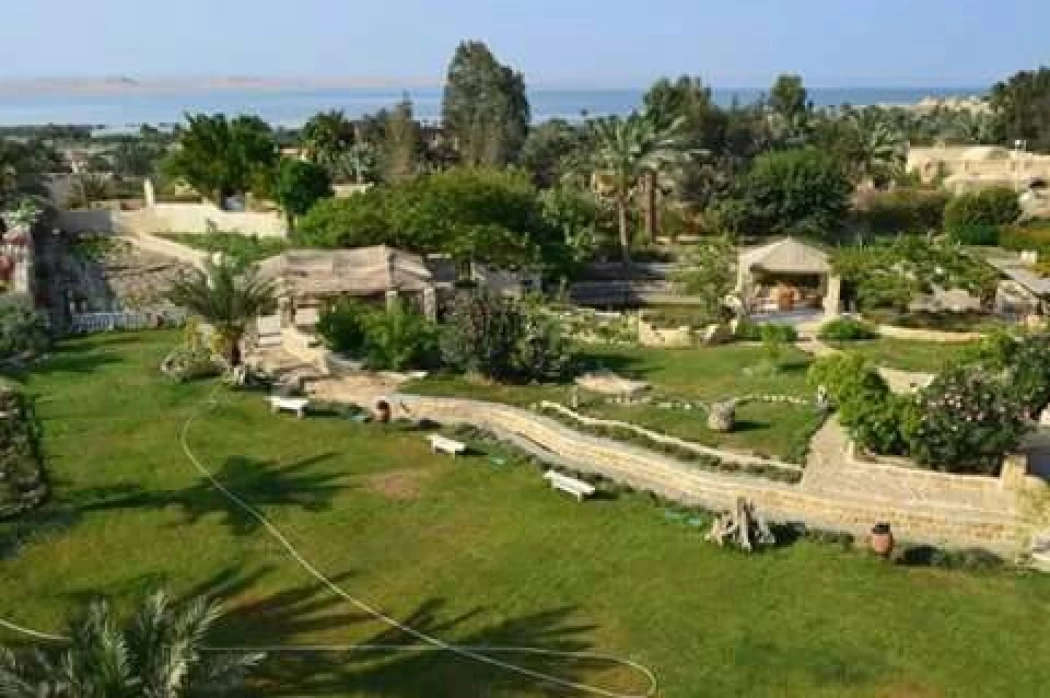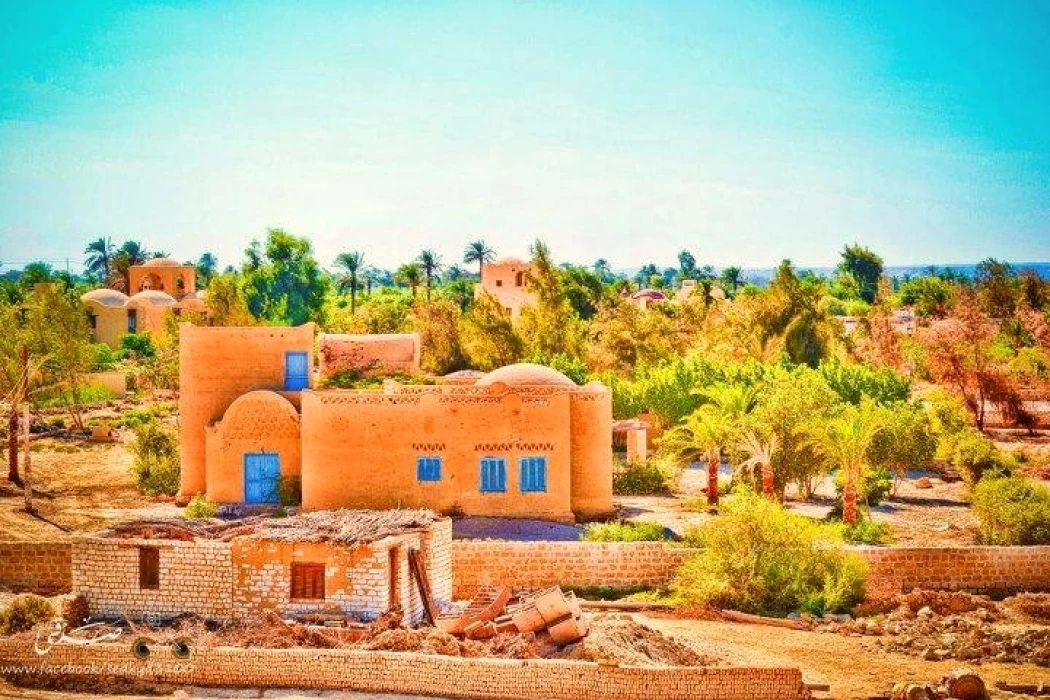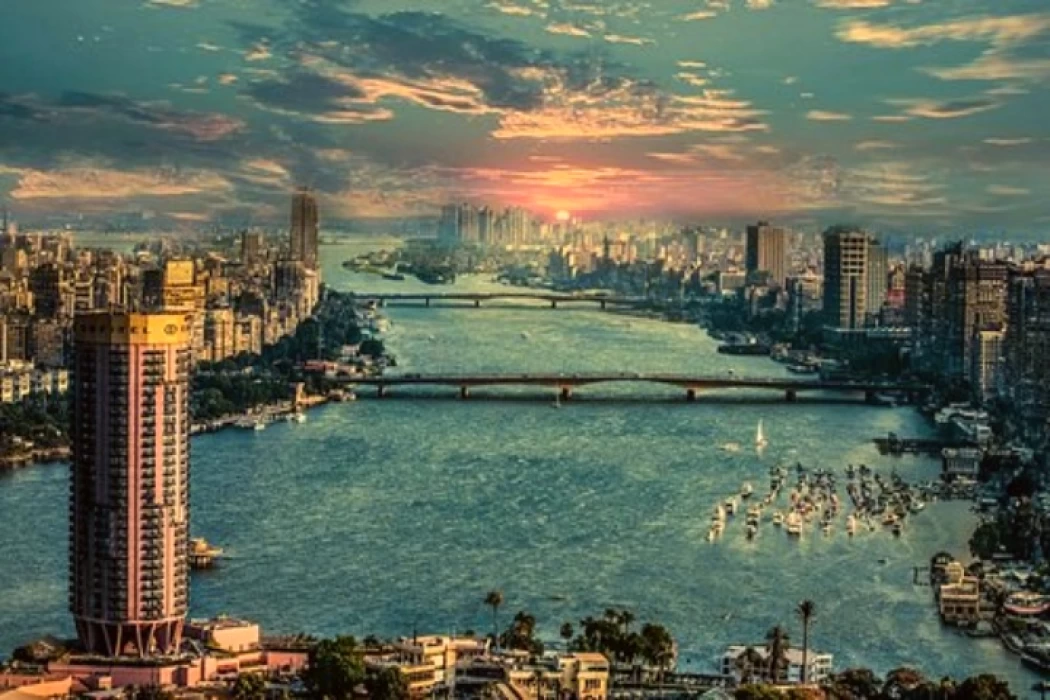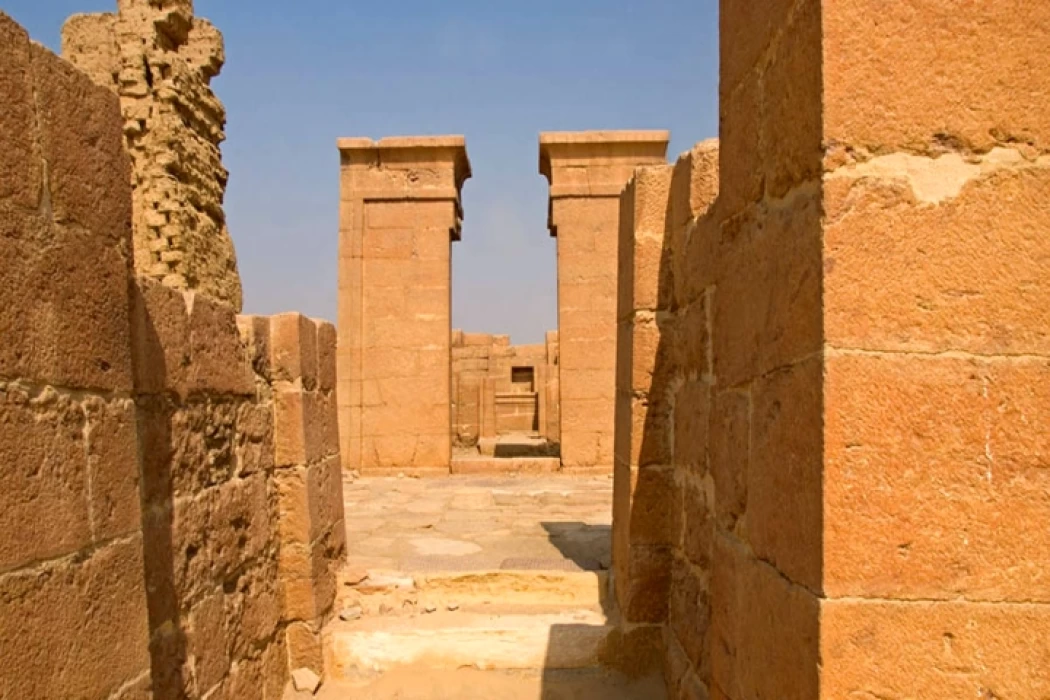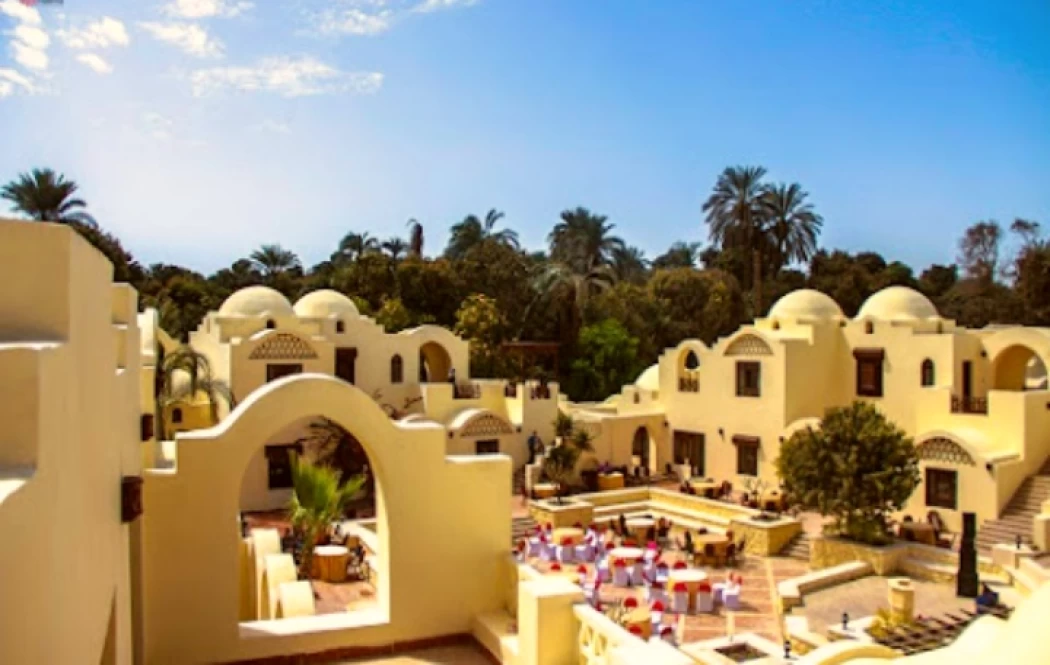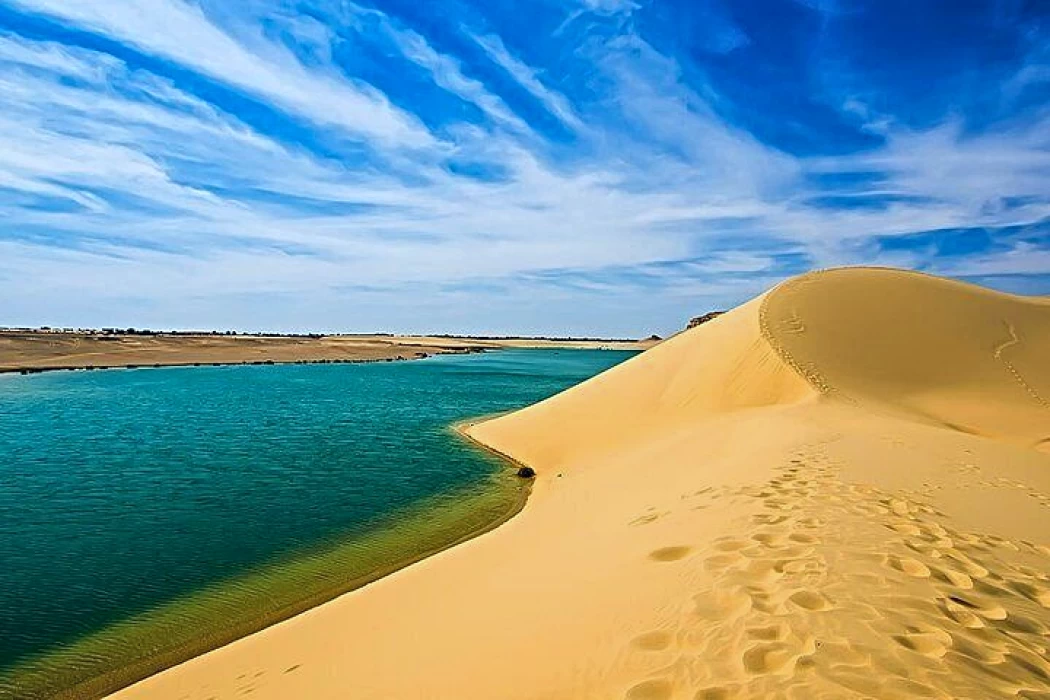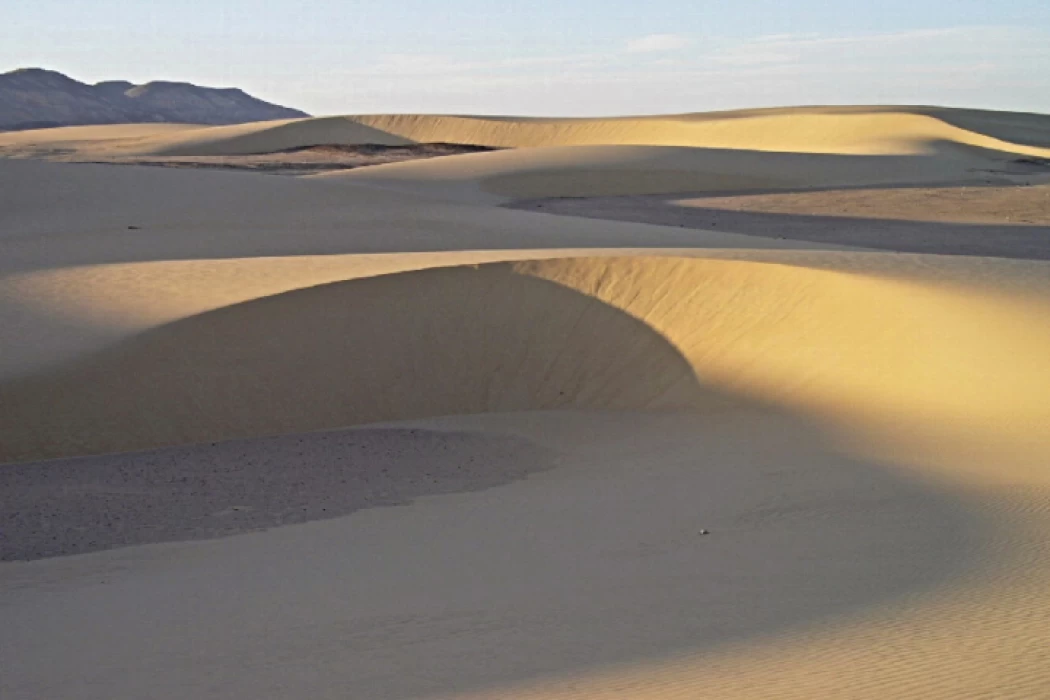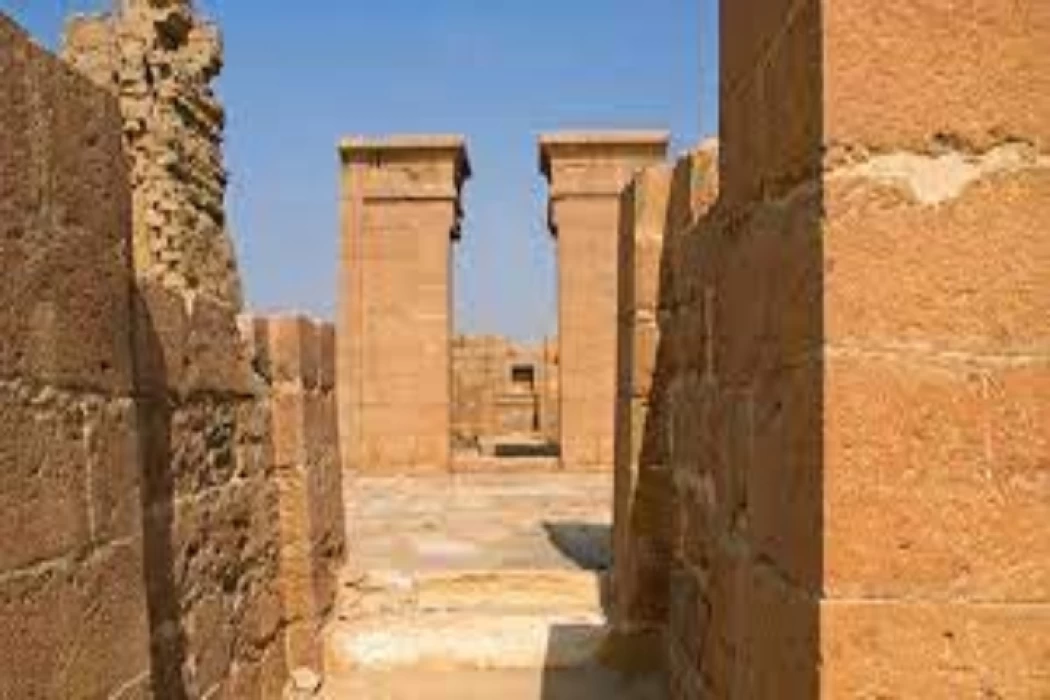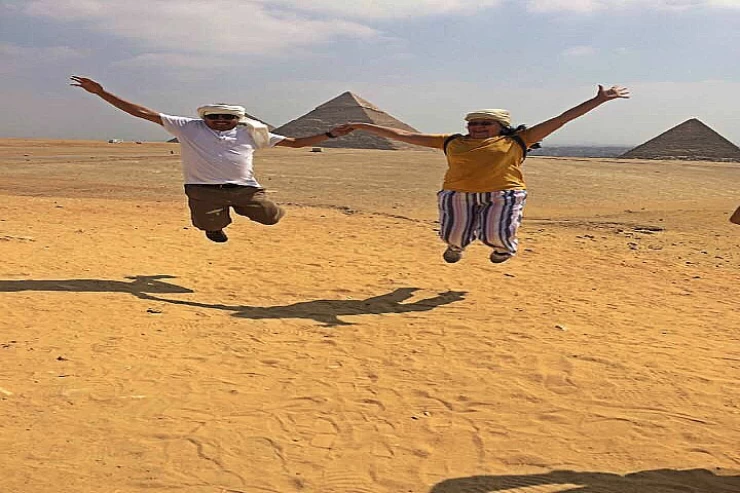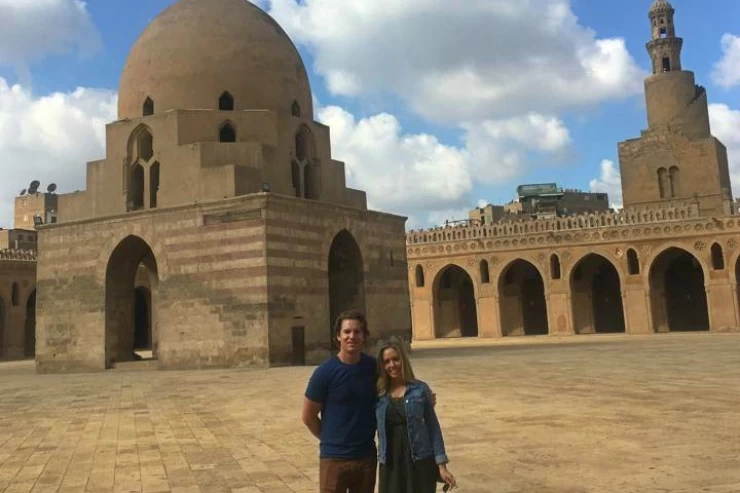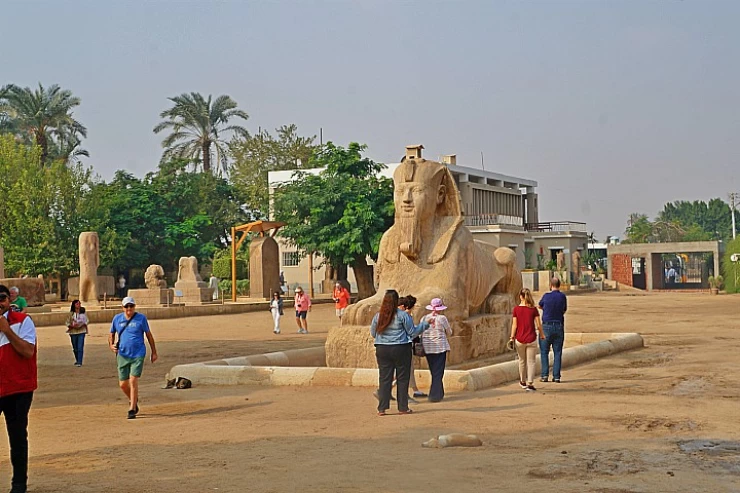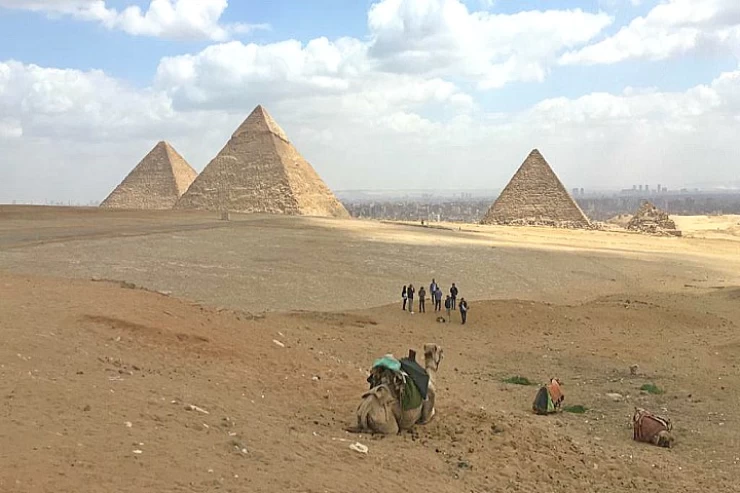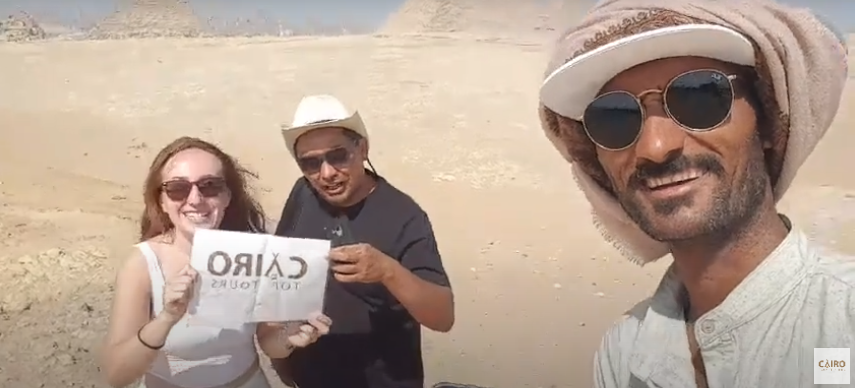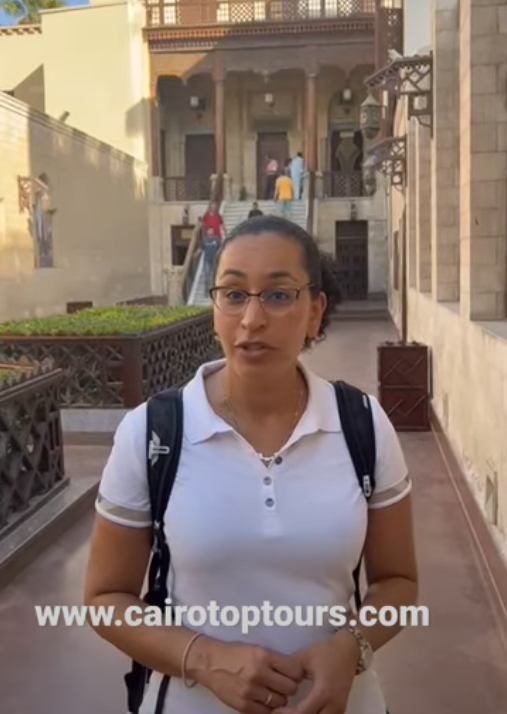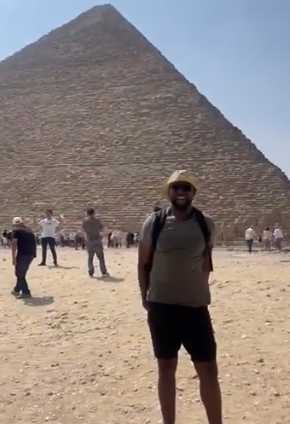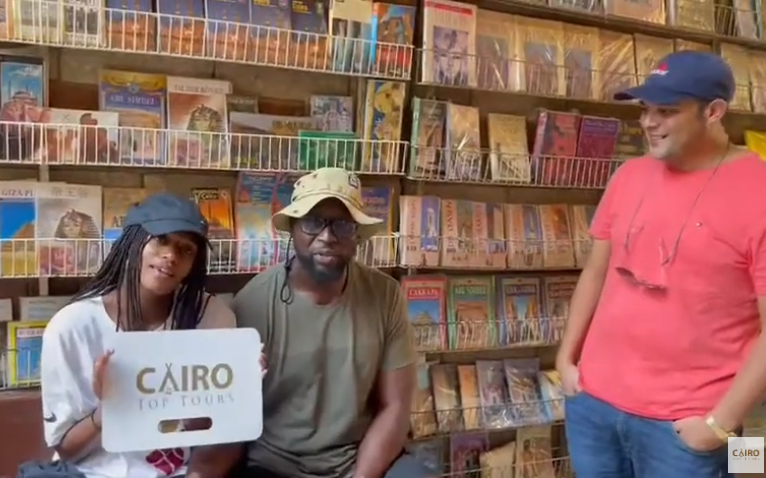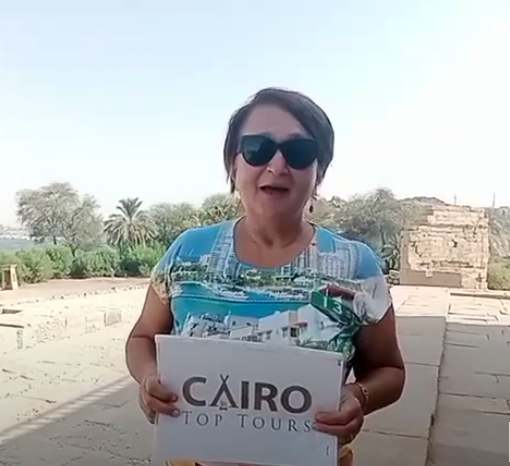Overnight Tour to Fayoum From Cairo
Overview
If you love camping and looking for a more adventurous experience, visit Fayoum City from Cairo Day Tours and consider taking an overnight trip to Wadi El Hitan, this is the trip for you! This area is also known as the "Valley of the Whales" because it's famous for its fossils. It has been preserved as an archaeological site since it was first discovered in 1952, and it contains fossilized remains of whales and sharks that lived millions of years ago.
You'll spend the night under the stars and wake up refreshed and ready for a day of exploring Cairo's beautiful landmarks and visiting all of the major Cairo attractions, such as the Pyramids, Sphinx, and Egyptian Museum. Your tour to Fayoum will be a great opportunity to relax, enjoy the enchanting nature, and discover the local heritage in this beautiful area of Egypt.
These Egypt Day Tours will give you a chance to immerse themselves in the beauty of the Fayoum region and the history of Wadi Al-Haytan, in addition to a unique camping experience in the arms of nature.
If you love camping and looking for a more adventurous experience, visit Fayoum City from Cairo Day Tours and consider taking an overnight trip to Wadi El Hitan, this is the trip for you! This area is also known as the "Valley of the Whales" because it's famous for its fossils. It has been preserved as an archaeological site since it was first discovered in 1952, and it contains fossilized remains of whales and sharks that lived millions of years ago.
You'll spend the night under the stars and wake up refreshed and ready for a day of exploring Cairo's beautiful landmarks and visiting all of the major Cairo attractions, such as the Pyramids, Sphinx, and Egyptian Museum. Your tour to Fayoum will be a great opportunity to relax, enjoy the enchanting nature, and discover the local heritage in this beautiful area of Egypt.
These Egypt Day Tours will give you a chance to immerse themselves in the beauty of the Fayoum region and the history of Wadi Al-Haytan, in addition to a unique camping experience in the arms of nature.
Inclusion
- Pickup service to and from your Cairo hotel.
- All transfers are made by 4x4.
- The aforementioned historical site charges admission.
- handbook for English-speaking Egyptologists.
- bottled water is available inside the touring car.
- EL Fayoum neighborhood restaurant for a late lunch.
- all service fees and taxes.
- 1 night on accommodation fayoum hotel with breakfast
Exclusion
- Any extras not mentioned in the program.
- Tipping.
Itinerary
our tour leader pick you up from your hotel in Cairo to start our trip to fayoum in a modern and air-conditioned car , when we arrive fayoum our first stop is
The Kom Aushim Museum which is A good place to find guides for all of Fayoum is museum. The Museum was first built in 1974. It displays artefacts from the Prehistoric to Roman Eras, and it also displays a portrait of Fayoum.
the second stop is One of the largest Greco-Roman cities in the Fayoum is Karanis (The Lord's Town). originally inhabited by the mercenaries of Ptolemy the Second's army and founded in the third century B.C. The city is home to two temples.
then we will transfer to Hawara( Arsinoiton polis) ( Arsinoiton polis), which dates back to the eleventh Dynasty when Amenemhet III built the Pyramid Complex.
then we will visit Lake Qarun, Named after the King who was interred in the wadi along with all of his money and possessions. and lunch will be served on Qarun Lake
at the end, we will visit Waterfall and Wadi El Rayan which is a depression that extends 673 kilometres and is 42 metres below sea level.
When this depression was connected to Qarun Lake by subterranean pipes, it was transformed into a water reservoir in 1966.
we end our trip visiting the village of Tunis and exploring the pottery art school.
overnight in fayoum hotel
after breakfast your tour leader pick you up from your hotel to start our day two of the trip, Using a 4x4 Jeep, begin your desert journey at Tunis Village, Qarun Lake, Take a trip to Wadi El Hitan in the desert. This is "Wadi Al Hitan" WADI EL-HITAN is also known for scientists in the Zeuglodon Valley, having been found in 1936, it is located 35 KM west of the Wadi El-Ryan, directly into the western desert, is a Protected area and a Natural Heritage Site listed in 2005 by the UNESCO as a world heritage site. It is a fossil-rich location that is thought of as an outdoor museum. It is 45 million years old and is home to soft rock fossils including petrified mangrove roots, shark teeth, and teeth from ancient whales.
Here, fossilised corals and seashells are everywhere. Visit the Fossil & Climate Change Museum, which features a number of fossilised whale bones and fossilised mangroves outside and a number of fossils, skeletons, fossilised mangroves, and ancient seashells inside of glass cases. Enjoy your meal, travel to Qusur El Arab, and Return to the Fayoum oasis, Visit the Madinet Madi temple. on the way back, take a drive to Cairo Visit the Fayoum Pyramids, then proceed to your hotel in Cairo.
Price
| Number of Persons | Prices |
|---|---|
| 1 Person | $660.00 Per Person |
| 2 - 3 Persons | $530 Per Person |
| 4 - 6 Persons | $465 Per Person |
| 7 - 10 Persons | $430 Per Person |
Quick tips
Start from : $430
Check Availability
Related Articles

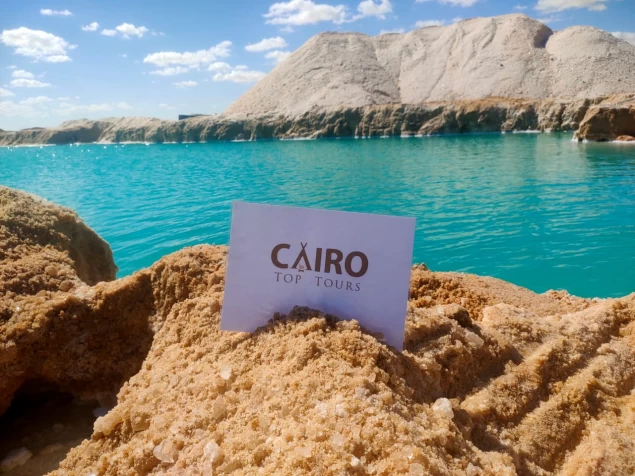
You Also May Like
Looking for something different? check out our related tour now, or simply contact us to tailor made your Egypt tour
Tour to Giza Pyramids and Egyptian Museum in Cairo
Don't miss the chance to be among the initial visitors to discover the concealed passageway within the Great Pyramid of Giza. Witness the marvels of the world, including the sphinx and the three pyramids. Additionally, you can observe the remarkable pharaonic artifacts at the Egyptian Museum during the day trip in Cairo.
Tour to the Egyptian Museum, Old Coptic and Islamic Cairo
Discover the significance of Egypt's city by visiting the Egyptian Museum and admiring its impressive exhibits. You can also visit the renowned landmarks and churches of Coptic Cairo that once housed the holy family and its unique icons. Furthermore, enjoy exploring the historic mosques of Islamic Cairo during your trip to old Cairo.
Cairo Excursions to Giza pyramids, Sakkara and Memphis
Embark on an extraordinary tour to witness the iconic pyramids of Giza and behold the magnificence of Egyptian pharaohs. Explore the ancient capital of Egypt, adorned with a plethora of pyramids and tombs, and unveil the concealed mysteries during your Cairo excursion.
Cairo Stopover Transit Tour | Cairo Layover Tour during the break
What about new experiences traveling through the ages? We will start by exploring the great pyramids and watching the great art of architecture, you will also discover the exceptional collection of artifacts of the Egyptian Museum. Another atmosphere, that you will enjoy during your tour in Khan El Khalili.
Egypt Trips and Middle East Reviews
Egypt Tours has gained a lot of positive reviews from travelers who praise cheap Egypt tours as reflected in our social media accounts, TripAdvisor reviews, and YouTube videos. Customers love traveling through Egypt with expert guides who remain with them throughout their journey, vividly enlivening each site they visit, from Egypt to the Holy Land.
Egypt Tours is now bombarded with glowing comments and praises from travelers who appreciate our economical tours as seen for themselves on our social media pages, TripAdvisor reviews, and YouTube videos. Traveling through Egypt is just perfect for guests who are accompanied by our expert guides bringing history alive at each site visited by the tourist throughout the journey to the Holy Land.
As you can see from our social media accounts, Trip Advisor, and YouTube videos, Egypt Tours has received a lot of positive feedback from customers who love their low-cost tours of Egypt with our experts who accompany them everywhere in Egypt to show them the history of each site they visit during their tours of Egypt and the Holy Land. As you can see from our social media accounts, and YouTube videos, Egypt Day Tour has received a lot of positive feedback from customers who love their low-cost tours of Egypt with our experts who accompany them everywhere in Egypt to show them the history of each site they visit during their tours of Egypt and the Holy Land.
Egypt Tours FAQ
Read top Egypt tours FAQs
Fayoum Oasis, located southwest of Cairo, is a tranquil and historically rich region in Egypt that offers a variety of tourist attractions. Here are some of the famous tourist attractions in Fayoum Oasis:
Lake Qarun (Birket Qarun): This large saltwater lake is a central attraction in Fayoum and offers opportunities for boating, fishing, and bird-watching. It's a beautiful spot for enjoying nature and scenic views.
Wadi El Rayan: This is Egypt's only official valley and waterfall. It's a protected area with stunning natural scenery, including a series of waterfalls formed by the Fayoum River. You can hike and explore the area while appreciating its biodiversity.
Hawara Pyramid: This ancient pyramid, also known as the Pyramid of Amenemhat III, dates back to the 12th Dynasty. It's an important archaeological site and offers insight into Egypt's history.
Qasr Qarun: This Greco-Roman temple, also known as the Temple of Dionysius, is dedicated to the god Sobek and is famous for its well-preserved reliefs and statues. It's a significant historical site in Fayoum.
Medinet Madi: These ruins are the remains of an ancient city and temple complex dedicated to the god Sobek. The site includes a well-preserved temple with intricate carvings and columns.
Wadi El Hitan (Valley of the Whales): Located on the outskirts of Fayoum, this UNESCO World Heritage Site is known for its well-preserved fossils of ancient whales and other prehistoric creatures. It's a fascinating destination for paleontology enthusiasts.
Fayoum City, the capital of Fayoum Governorate, offers a glimpse into daily life in the region. Explore the local markets, sample Egyptian cuisine, and visit the Coptic Cathedral of Saint Abraam.
Karanis (Kom Aushim): These archaeological ruins represent the remains of an ancient Roman city and offer insight into the daily life of the inhabitants during Roman times. You can explore well-preserved structures, including houses and a bathhouse.
Qaitbay Mosque: Located in Fayoum City, this historic mosque is known for its unique architectural style, which combines Islamic and Coptic elements.
Fayoum Waterwheels: These traditional waterwheels (sakiehs) have been used for centuries to irrigate the fields in the oasis. They are an iconic part of the landscape and offer a glimpse into traditional farming methods.
The best time to visit Fayoum for tourists is during the cooler months of late autumn, winter, and early spring. Fayoum is a beautiful oasis located southwest of Cairo, and it offers a unique blend of natural beauty and cultural attractions. Here's a breakdown of the seasons to help you plan your visit:
Late Autumn (October to November): This is an excellent time to visit Fayoum, as the weather is comfortably warm and daytime temperatures range from the mid-20s to low 30s Celsius (mid-70s to low 80s Fahrenheit). It's a great time for outdoor activities, such as exploring the oasis, visiting archaeological sites, or taking boat trips on Lake Qarun.
Winter (December to February): Winter is the peak tourist season in Fayoum due to the mild and pleasant weather. Daytime temperatures range from the mid-teens to the low 20s Celsius (high 50s to low 70s Fahrenheit). This is an ideal time for exploring the area's attractions, including the Fayoum Pyramids, Wadi El Hitan (Whale Valley), and Qasr Qarun.
Early Spring (March to April): Spring is another good time to visit Fayoum. Temperatures gradually warm up, with daytime temperatures in the low to mid-20s Celsius (mid-70s Fahrenheit). The oasis is often lush with vegetation during this time, making it a picturesque destination.
Late Spring and Summer (May to September): Late spring and summer are the hottest months in Fayoum, with daytime temperatures frequently exceeding 30 degrees Celsius (86 degrees Fahrenheit) and sometimes reaching 40 degrees Celsius (104 degrees Fahrenheit) or higher. It can be uncomfortably hot for outdoor activities during this period, so it's less recommended for tourism.
Fayoum, located southwest of Cairo, offers a unique opportunity to experience authentic Egyptian cuisine and local flavors. To immerse yourself in the culinary culture of Fayoum, consider the following ways:
Local Food Tours: Join a local food tour or culinary walking tour in Fayoum. These tours are led by knowledgeable guides who take you to the best local eateries, markets, and street food stalls to sample traditional dishes. You'll get to taste specialties like fiteer (Egyptian pastry), ta'meya (falafel), koshary, and regional dishes.
Cooking Classes: Enroll in a cooking class where you'll learn to prepare Egyptian dishes firsthand. Local chefs or home cooks can teach you the secrets behind traditional recipes. It's a hands-on way to engage with the local cuisine and culture.
Farm-to-Table Experiences: Fayoum is known for its fertile farmland. You can visit local farms and participate in farm-to-table experiences, such as harvesting fresh produce and cooking with locally sourced ingredients.
Local Markets: Explore the bustling local markets in towns like Medinet el-Fayoum and Tunis. These markets offer an opportunity to see and buy fresh, regional produce and ingredients, as well as unique products like honey and date-based treats.
Yes, Fayoum is a region in Egypt known for its natural beauty, archaeological sites, and cultural attractions. There are several nearby tourist spots and day trips you can explore while in Fayoum:
- Lake Qarun (Birket Qarun)
- Wadi El Hitan (Valley of the Whales)
- Qasr Qarun (Temple of Dionysias)
- Medinet Madi.
- Water Wheels (Sakia)
- Qasr Al-Sagha Temple
- Tunis Village.
- Magic Lake.
- Qatrani Mountain.
- Kom Oshim Archaeological Site
Yes, it's possible to hire a private tour guide for a Fayoum day tour. we offer private guides who can accompany you specifically for your visit to Fayoum. These guides are knowledgeable about the area, its history, and attractions, and can offer a more personalized experience tailored to your interests.
Cairo Top Tours Partners
Check out our partners
